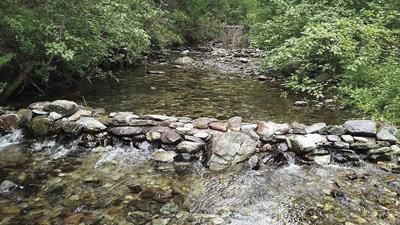Were you using thicker schedule 80 (gray) PVC or thinner walled white?
White schedule 40
I forgot to add:
HOW TO ADJUST YOUR RAM.
The trick to adjusting you ram stroke length and spring pressure took me a long time to figure out but I find it was the only way to get truly reliable operation. This sequence of adjustments I have found is very important for a properly tuned ram.
Set your stroke length as long as it will go, something like 1" is good to start.
Adjust your spring as weak as you can until the ram closes and sticks closed.
With the ram stuck closed, slowly increase SPRING TENSION until the ram pops open. It will most likely stick open at this point
DECREASE STROKE LENGTH until the ram closes. It should start cycling. If it does not, manually run the valve a dozen times or so until your pressure tank is fully pressurized to whatever it needs to be for your rise, many rams will only cycle when the pressure tank is charged.
If the ram stops after a few cycles, what you do depends on if its stuck open, or stuck closed.
If stuck CLOSED increase spring
pressure slightly.
If stuck OPEN, decrease stroke
length slightly.
Stroke length in a high pressure ram, that is one with a good amount of head on the drive line, may be very short.
Mine is only about 3/16th of an inch.
Your final stroke length will depend a lot on your rise and run.
Mathematically, you need your ram set up so:
Static water pressure < spring pressure
Moving water pressure on clack valve > spring pressure
The mistake I kept making was when the valve was stuck open, I would decrease spring pressure, which would make the ram cycle, but then lead to it sticking closed. With a ram, as long as the spring pressure is enough to pop it open under static pressure, you stop adjusting the spring, and only adjust the stroke length to fix any cycling problems.
All this applies as well to gravity operated clack valves, just replace spring pressure, with weight.
If your ram sticks both open AND closed alternatingly, your pressure tank is too small, or has lost all its air pressure and filled with water.
You know your pressure tank is the right size when you can't see any pulses in your output line but only get a steady stream.





























































